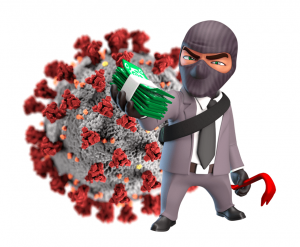Not too long ago, (some) businesses tried to limit websites that people could visit during working hours. They blocked social sites and Trademe and so forth. The logic was that people should be working, not surfing the net. Luckily this seems to have faded – staff are trusted, albeit tracking the website activity of your teams might still be of interest.
We’re more interested in keeping people safe

Today, the main concern isn’t usually restricting staff’s web access. It’s more about keeping people safe.
I had a reminder of this last night when my daughter came running in thinking she’d hit a virus while researching her university paper. (She hadn’t, she’d just stumbled on one of those fake messages and hit the panic button). She was right to do so, because there are heaps of websites that contain malware that will infect your machine. We can have the latest protection on your machine, but even then, it’s often one cycle behind the bad guys.
That’s why security is layered. More layers help us prevent risks. I guess it’s like a modern car relies on all sorts to keep you safe, from autonomous breaking, to airbags, to collision warnings. This is the IT equivalent of taking all reasonable steps to keep you safe – not all web pages are what they seem to be!
How does it work
Firstly, lets acknowledge that some websites are infected. Generally the websites you go to all the time are ok, but just occasionally they get infected by malware. Some sites are better protected than others. But you don’t have control of that – you can only control your own system. Likewise, some websites are set up by the hacker to catch you. Sometimes it’s as simple as being almost the same as a genuine site. A simple misspelling difference (and if your typing is like mine, sometimes you mistype a web address and that can take you where you didn’t expect!) Other times, they advertise their infected site with a compelling ‘click-bait’ message to tempt you to click on it.
There were some appalling behaviours seen during the Covid19 outbreak, with genuine sites being copied, and the copies infected with malware and promoted, There were legitimate commercial sites being copied, and accepting orders for PPE product that was never going to be delivered – the Interpol fraud site makes for some bleak reading.
You and your colleagues need some kind of check to stop you stumbling on these sites. We’re using a tool that scans the internet, using machine learning to assess and test the IP address that your users are browsing to. If the site comes up as risky, the user gets a warning. You can set up categories to block, like the obvious pornography or gambling sites. The tools are very clever at detecting sites based on the content they observe . They then apply filters in a much more responsive and immediate manner than used to be possible.
Rather than the DNS being supplied by your ISP’s server, the DNS is now operated at our trusted security partner. That means it is actively managed, and it works just as well for people that are out of your office as it does for people that are in the office. Things have changed, so we can use the cloud to keep you safer than we ever used to be able to.
KARE for Security complements your existing maintenance contract with an enhanced security package, designed for the modern cloud-anywhere world. It’s a mixture of tools that go beyond traditional IT support to help you harden your ICT against intruders.
What more can you do?
Cert NZ is the NZ Government Cyber Security unit – it’s worth reading their top recommendations – https://www.cert.govt.nz/it-specialists/critical-controls/ – you’ll see that a Kinetics KARE plan helps you minimise your risk.
